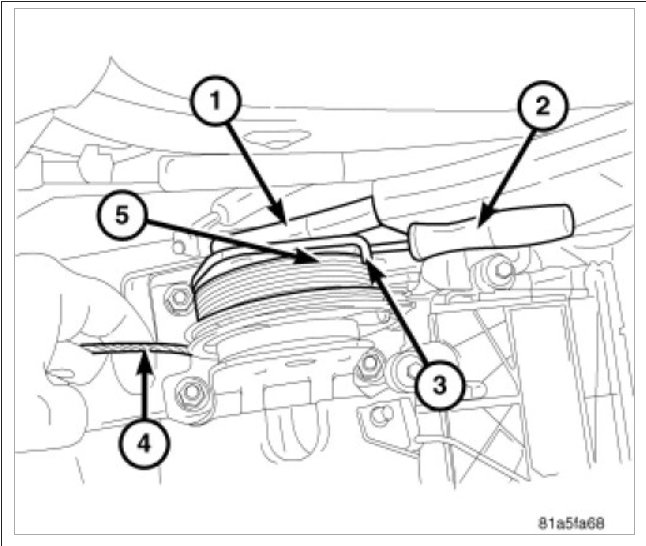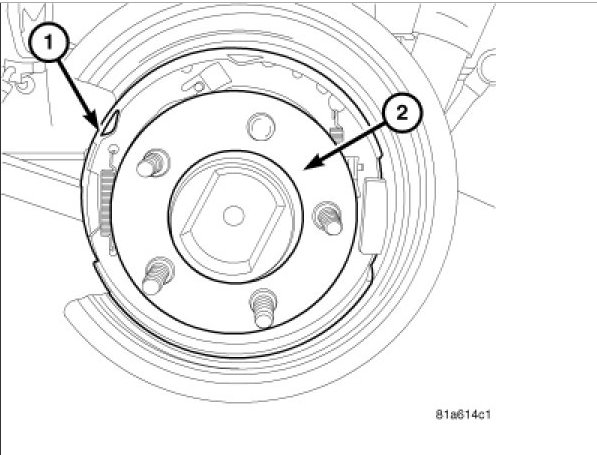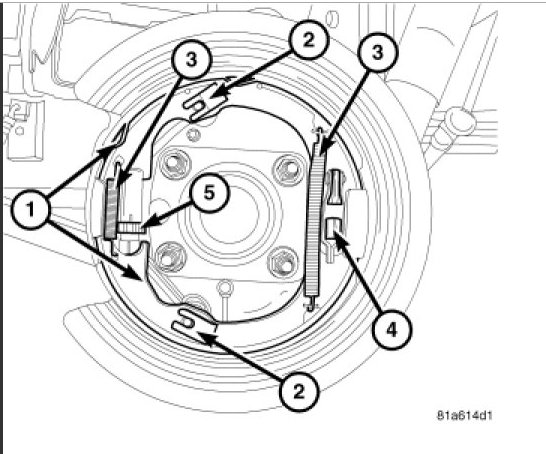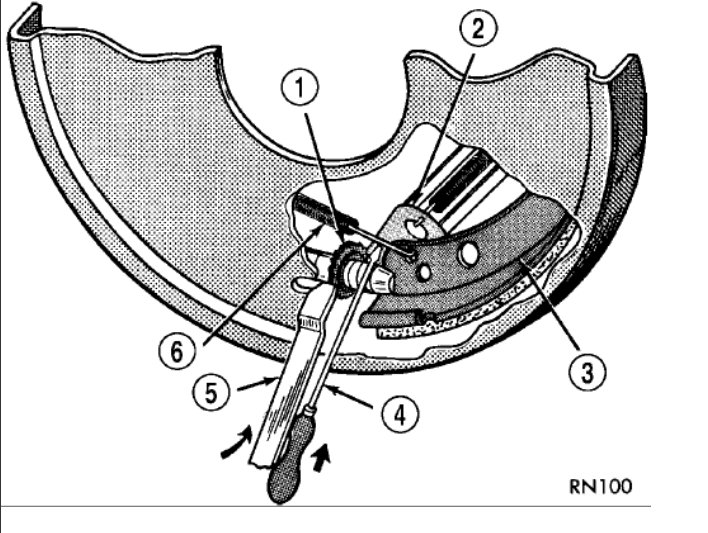Hello,
It could be because the parking brake shoes are worn out and this is why it is not holding. This happens when the car is driven with the parking brake on.
Here is a guide to help you see what you are in for when changing the parking brake shoes:
https://www.2carpros.com/articles/parking-brake-shoe-replacement
Here are some diagrams of how it will be on your car (below).
REAR DRUM IN HAT PARK BRAKE (ROTOR INSTALLED) USING ADJUSTING TOOL
Adjustment can be made with a standard brake gauge or with adjusting tool. Adjustment is performed with the complete brake assembly installed on the backing plate.
Be sure parking brake lever is fully released.
Raise vehicle so rear wheels can be rotated freely.
Remove plug from each access hole in brake support plates.
Loosen parking brake cable adjustment nut until there is slack in front cable.
Insert adjusting tool through support plate access hole and engage tool in teeth of adjusting screw star wheel.
Rotate adjuster screw star wheel (move tool handle upward) until slight drag can be felt when wheel is rotated.
Push and hold adjuster lever away from star wheel with thin screwdriver.
Back off adjuster screw star wheel until brake drag is eliminated.
Repeat adjustment at opposite wheel. Be sure adjustment is equal at both wheels.
Install support plate access hole plugs.
Adjust parking brake cable and lower vehicle.
Apply park brake hand lever and make sure park brakes hold the vehicle stationary.
Release park brake hand lever.
REAR DRUM IN HAT PARK BRAKE (ROTOR REMOVED)
Under normal circumstances, the only time adjustment is required is when the shoes are replaced, removed for access to other parts, or when one or both rotors are replaced.
Adjustment can be made with a standard brake gauge or with adjusting tool. Adjustment is performed with the complete brake assembly installed on the backing plate.
CAUTION: Before adjusting the park brake shoes be sure that the park brake pedal is in the fully released position. If park brake pedal is not in the fully released position, the park brake shoes can not be accurately adjusted.
Raise vehicle.
Remove tire and wheel.
Remove disc brake caliper from caliper adapter.
Remove rotor from the axle shaft.
NOTE: When measuring the brake drum diameter, the diameter should be measured in the center of the area in which the park brake shoes contact the surface of the brake drum.
Using Brake Shoe Gauge, Special Tool C-3919 (1), or equivalent, accurately measure the inside diameter of the park brake drum portion of the rotor.
Using a ruler (2) that reads in 64th of an inch, accurately read the measurement of the inside diameter of the park brake drum from the special tool.
Reduce the inside diameter measurement of the brake drum that was taken using Special Tool C-3919 (2) by 1/64 of an inch. Reset Gauge, Brake Shoe, Special Tool C-3919 (2) or the equivalent used, so that the outside measurement jaws are set to the reduced measurement.
Place Gauge, Brake Shoe, Special Tool C-3919 (2) , or equivalent over the park brake shoes. The special tool must be located diagonally across at the top of one shoe and bottom of opposite shoe (widest point) of the park brake shoes.
Using the star wheel adjuster, adjust the park brake shoes until the lining on the park brake shoes just touches the jaws on the special tool.
Repeat step 8 above and measure shoes in both directions.
Install brake rotor on the axle shaft.
Rotate rotor to verify that the park brake shoes are not dragging on the brake drum. If park brake shoes are dragging, remove rotor and back off star wheel adjuster one notch and recheck for brake shoe drag against drum. Continue with the previous step until brake shoes are not dragging on brake drum.
Install disc brake caliper on caliper adapter.
Install wheel and tire.
Tighten the wheel mounting nuts in the proper sequence until all nuts are torqued to half the specified torque. Then repeat the tightening sequence to the full specified torque of 129 Nm (95 ft. lbs.).
Lower vehicle.
CAUTION: Before moving vehicle, pump brake pedal several times to ensure the vehicle has a firm enough pedal to stop the vehicle.
NOTE: After parking brake lining replacement, it is recommended that the parking brake system be conditioned prior to use. This is done by making one stop from 25 mph on dry pavement or concrete using light to moderate force on the parking brake hand lever.
Road test the vehicle to ensure proper function of the vehicle's brake system.
Check out the diagrams (below)
Let us know what happens and please upload pictures or videos of the problem.
Cheers, Ken
Images (Click to make bigger)
Tuesday, November 14th, 2017 AT 10:57 AM




